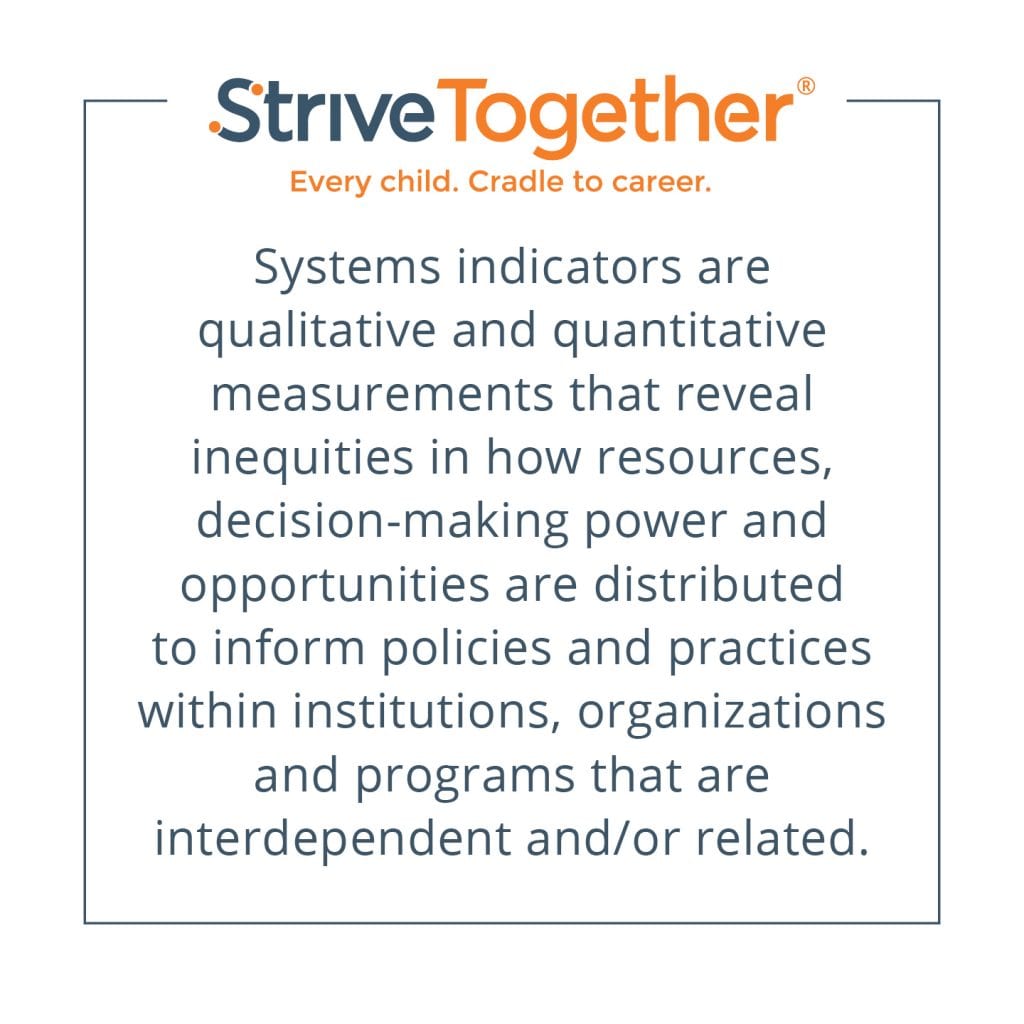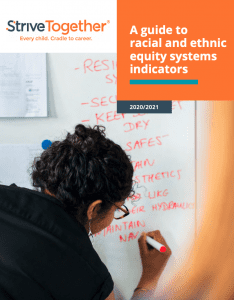At StriveTogether, we aren’t just proving what is possible; we’re proving what is measurable. Today, I’m proud to be sharing a new framework and guide for measuring the impact of systems on getting better, more equitable results for youth and families.
 Systemic inequity creates opportunity gaps particularly for children, young people and families of color. We’re helping communities address inequities by using data to inform decisions. Data has been core to our work since we established the Cradle to Career Network 10 years ago and will become increasingly important over the next 10 years as we begin collecting systems indicators data.
Systemic inequity creates opportunity gaps particularly for children, young people and families of color. We’re helping communities address inequities by using data to inform decisions. Data has been core to our work since we established the Cradle to Career Network 10 years ago and will become increasingly important over the next 10 years as we begin collecting systems indicators data.We often use indicators to measure outcomes at the individual level. These outcomes include academic achievement gaps, postsecondary enrollment and completion rates, maternal and infant health disparities, and wealth gaps.
But when we focus on individual-level outcomes, we don’t get the full picture. We don’t see the norms, policies and practices embedded within systems — institutions and organizations — where young people live, learn and grow. We miss the role that complex systems play in creating racialized disparities in education, health, wealth and social mobility.

Looking at individual-level outcomes leads to shifting the blame to students and families rather than the inherent inequities in systems that were designed to fail youth and families of color. This creates false and discriminatory narratives that perpetuate systemic oppression.
We can widen our view and challenge false narratives by identifying, collecting and reporting systems-level indicators. When systems indicators are coupled with individual indicators, institutions and organizations can be held accountable to create conditions where every child, every young person and every family has the opportunity to thrive regardless of race or place.
Our new framework addresses cradle-to-career indicators as well as adjacent sector indicators. Inequity is perpetuated at a structural level in multiple facets in our communities and influences educational opportunity. While this framework is still being tested, several Cradle to Career Network members are tracking systems indicators:
addresses cradle-to-career indicators as well as adjacent sector indicators. Inequity is perpetuated at a structural level in multiple facets in our communities and influences educational opportunity. While this framework is still being tested, several Cradle to Career Network members are tracking systems indicators:
- Boston Opportunity Agenda in Boston, Mass.,
- Bright Futures Education Partnership in Monterey County, Calif.,
- ImpactTulsa in Tulsa, Okla.,
- Promise Partnership in Salt Lake City, Utah, and
- UP Partnership in Bexar County, Texas.
We hope these network stories will inspire other communities to engage in systems-level work to achieve equitable results for children, young people and families of color and those experiencing poverty.

This new guide to racial and ethnic equity systems indicators is a result of work that began two years ago when a team of staff, network and board members recommended steps to integrate racial and ethnic equity more explicitly in our work. Throughout the process, the team asked what the disparities in student-level outcomes suggest about the systems that create those outcomes and how to use data to track the role that systems play in creating disparities.
This led to the creation of the Racial and Ethnic Equity Action Team, a diverse group of 27 network members, community partners and staff that identified key systems indicators.
We will continue to test and refine this framework alongside our network before integrating it into our Theory of Action™. Together, systems indicators and outcomes data will help capture a fuller understanding of how structural inequities produce inequitable outcomes and inform stronger systems-level strategies. By doing so, we’ll be able to transform systems to get more equitable results for youth and families.






